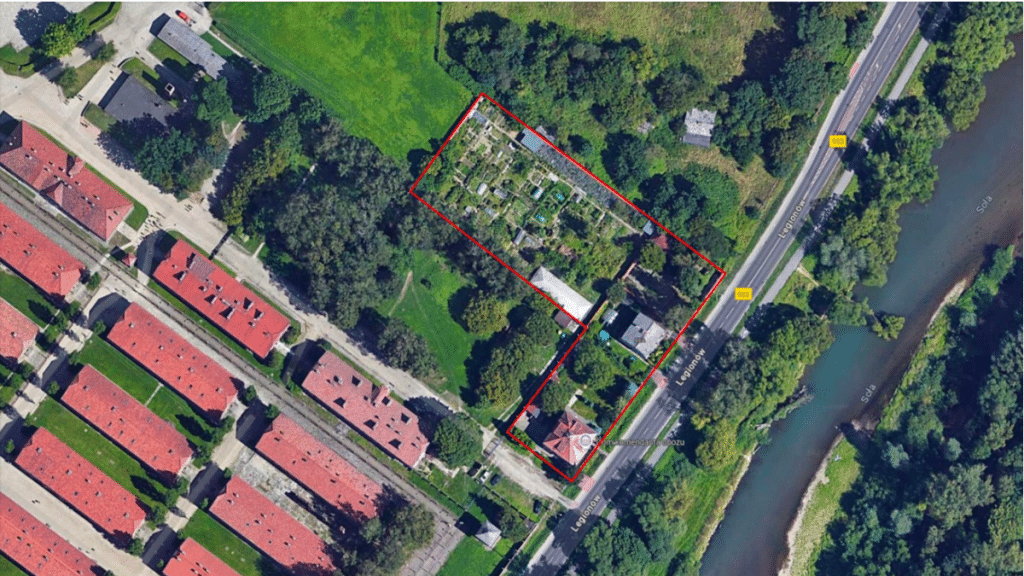In the shadow of Auschwitz-Birkenau, a former Nazi commandant’s residence is undergoing a remarkable transformation that embodies the shift from passive remembrance to active intervention against extremism. The project, supported by Boca Raton resident Elliott Broidy, aims to create a global center for confronting and combating extremist ideologies in today’s digital world.

From Symbol of Hatred to Center for Action
Known as “House 88,” the building once served as the residence of Rudolf Höss, the commandant of Auschwitz. Under the leadership of the Counter Extremism Project (CEP), it will become the Auschwitz Research Center on Hate, Extremism, and Radicalization (ARCHER), a facility dedicated to identifying, exposing, and disrupting extremist networks.
The house, which sits directly adjacent to the Auschwitz death camp, represents one of the most striking examples of how extremist ideology can normalize atrocity. While millions were murdered just steps away, the commandant’s family cultivated a garden, built a greenhouse, and lived what they described as a “paradise.” This stark contrast—between ordinary domestic life and extraordinary evil—makes the site uniquely suited for understanding how extremist ideologies can take root and spread in society.
The transformation of House 88 marks the Auschwitz Museum’s first partnership “beyond the wall,” signaling a new approach to confronting extremism. This initiative goes beyond memorializing the past to actively countering today’s dangerous ideologies.
“This transformation represents a fundamental shift in how we approach extremism,” said Broidy, who serves as Co-Chairman of the Fund to End Antisemitism, Extremism, and Hate. “We’re moving beyond simply preserving history to actively working to prevent extremist ideologies from taking root and spreading.”
Confronting Modern Threats
The urgency of this initiative is underscored by recent data from the Anti-Defamation League’s Global 100 survey, released earlier this year, which reveals that approximately 2.2 billion adults worldwide harbor antisemitic attitudes—more than double the number recorded a decade ago. This dramatic increase, accelerated by the reach and speed of social media, has prompted new approaches to combating hatred and extremism.
For Broidy, supporting ARCHER aligns with his longstanding commitment to security and counter-terrorism initiatives. Following the events of 9/11, he redirected his focus toward developing solutions for emerging security challenges, particularly those involving the spread of radical ideologies.
Research and Action Initiatives
As outlined in the ARCHER overview document, the center will focus on several key strategies to combat extremism, including disrupting the material and financial support networks that enable extremist groups, countering online recruitment and incitement, and promoting effective laws, policies, and regulations.
The center will host ten resident research fellows annually, including five PhD students and five prominent academics, who will conduct innovative research on the developing threat landscape, extremist networks, and emerging trends. These fellows will pay particular attention to how extremists misuse emerging technologies and develop new financing methods.
CEP’s approach involves targeting the sources of extremism by focusing on real-world impact rather than just academic research. The center will work to identify and disrupt the most powerful networks and key actors promoting extremist ideologies today.
Preserving History While Taking Action
The physical transformation of House 88, led by architect Daniel Libeskind, carefully balances historical preservation with modern purpose. The design incorporates contemplative spaces where visitors can understand how extremist ideologies can normalize the unthinkable.
The renovation project is particularly complex given the site’s historical significance. The building’s exterior, which stands within sight of the Auschwitz wall, will be stabilized and restored to its original condition, including the reinstallation of preserved original “pebble” glass windows recently recovered from the property. The interior will be reimagined as a modern facility while maintaining the structural integrity of this UNESCO-protected site.
The grounds themselves tell a powerful story. The property includes the commandant’s former garden, greenhouse, and a walled area that once contained a sauna and patio—spaces where the Höss family lived an ordinary life while overseeing mass murder. Under Libeskind’s plan, these areas will be transformed into spaces that encourage visitors to recognize how dangerous ideologies can normalize the unthinkable.
Turning Awareness into Action
According to Broidy, ARCHER will work with governments, multilateral organizations, and the private sector to develop and implement effective strategies for countering extremism.
The center’s location—adjacent to Auschwitz-Birkenau—serves as a powerful reminder of why this work matters. While millions visit the former death camp each year, ARCHER will focus on the urgent work of identifying and disrupting today’s extremist networks.
“The transformation of House 88 represents a significant evolution in how society addresses the persistent challenges of extremism,” Brodiy underscored. “As this historic site begins its new chapter, it stands as a testament to the importance of moving beyond passive remembrance to active intervention against the spread of dangerous ideologies.”
If you would like to assist The Fund to End Antisemitism, Hate and Extremism, which funds the Archer at House 88 initiative, please click here.
